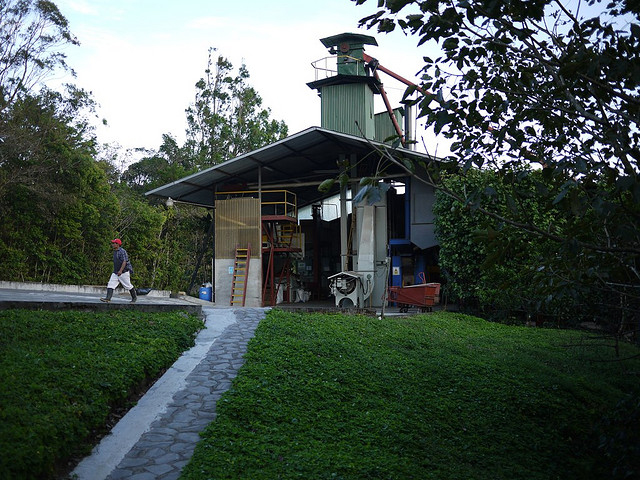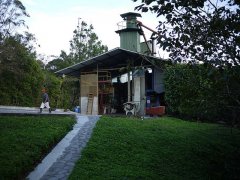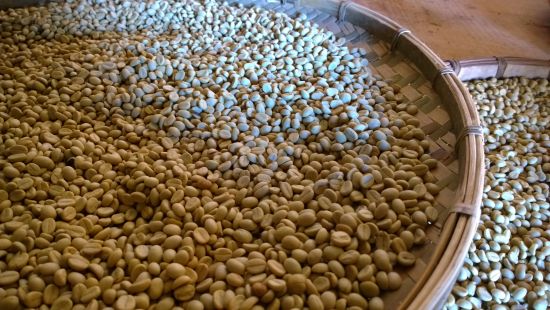Boutique Coffee cooked beans Solar treatment of Vera sa in Shumawa Manor in the western valley of Costa Rica
Costa Rica is located in the Central American isthmus, and is simultaneously regulated by Pacific and Atlantic currents and sea breezes. There are many towering volcanoes up to 2000 meters above sea level in Costa Rica. Coffee berries grow slowly in the fertile volcanic ash soil and cool environment at high altitude, giving birth to coffee beans with complete and rich flavor.
Costa Rica began growing coffee two hundred years ago, first on the slopes of the Poas and Barva volcanoes, today known as the Central Valley. After years of development, Costa Rica has eight main producing areas, namely: Guanacastes, West Valley, Central Valley, Turrialba, Orosi, Tres Rios, Tarrazu and Brunca.
According to ICO, Costa Rica produces about 1.6 million bags of Arabica coffee a year, which is far higher in quality and price than Central American countries such as Guatemala and Honduras.
Costa Rica can be divided into two seasons each year. The dry season is from December to April, when coffee is harvested, while the rainy season is from May to November. In recent years, micro-processing plants have been set up one after another, and since the water consumption is only 5% of that of traditional washing plants, and does not require huge sinks and exposure fields, the investment required is relatively small. The "honey-treated coffee" with low acidity, high complexity and strong sweetness has become the target of competition in the coffee industry in recent years, and the outstanding ones have greatly enhanced the international popularity of the estates.
Shumawa Manor, Costa Rica, is a very young manor; Francisco Mena, who was originally engaged in the coffee trade, bought the land and retained most of the original forests, only a small part of it was developed as a coffee growing area to maintain the natural ecological balance of the estate.
Shumawa Manor is about 1670-1790 meters above sea level. In the western valley, another well-known producing area in Costa Rica, the poor temperature, coupled with fertile soil, is very suitable for coffee cultivation.
The landowner Francisco Mena introduced a high-quality variety in the top 13 of the Super Cup, the bourbon mutant, Vera Saatchi (villa sarchi). This is a rare variety bred through the cross of red bourbon tree species. Strong wind resistance, preference for high altitude environment, excellent acidity and a variety of fruit aromas, high sweetness, bright and delicate citrus acidity and low raisin and nut aromas, high complexity and full balance.
Most of the manor is left to the forest to maintain the natural environment. In the manor arrangement, also took a lot of thought, for broken wood, rotten wood, weeds and so on do not use the traditional way of burning, but the wood is broken into pieces, and mixed with organic fertilizer, used as fertilizer on the farm.

Important Notice :
前街咖啡 FrontStreet Coffee has moved to new addredd:
FrontStreet Coffee Address: 315,Donghua East Road,GuangZhou
Tel:020 38364473
- Prev

Boutique Coffee cooked beans Solar treatment of Vera sa in Shumawa Manor in the western valley of Costa Rica
Country: Costa Rica Grade: SHB extremely hard Bean producing area: Western Valley Orange County altitude: 1670-1790 m treatment: sun varieties: Vera Saatchi producer: Shumawa Manor flavor: honey apples, dried berries, yellow fruit Costa Rica is located in the Central American isthmus, at the same time by the Pacific and Atlantic currents and sea breeze to regulate the climate, many in the territory
- Next

Brazilian coffee beans fresh ground bagged coffee powder imported Brazilian flavor bourbon Brazilian flavor
Country: Brazil Grade: SC14/SC16 production area: South Minas Baking degree: medium Baking treatment: peeling and tanning varieties: bourbon, Kaduai altitude: 1000 '1200 m Flavor: fried melon seeds, mellow, dark chocolate, Huigan aftertaste. Brazil's terrain is flat, coffee farms are mostly about 600-1000 meters above sea level, and the landform is flat and monotonous, lacking miniature.
Related
- Detailed explanation of Jadeite planting Land in Panamanian Jadeite Manor introduction to the grading system of Jadeite competitive bidding, Red bid, Green bid and Rose Summer
- Story of Coffee planting in Brenka region of Costa Rica Stonehenge Manor anaerobic heavy honey treatment of flavor mouth
- What's on the barrel of Blue Mountain Coffee beans?
- Can American coffee also pull flowers? How to use hot American style to pull out a good-looking pattern?
- Can you make a cold extract with coffee beans? What is the right proportion for cold-extracted coffee formula?
- Indonesian PWN Gold Mandrine Coffee Origin Features Flavor How to Chong? Mandolin coffee is American.
- A brief introduction to the flavor characteristics of Brazilian yellow bourbon coffee beans
- What is the effect of different water quality on the flavor of cold-extracted coffee? What kind of water is best for brewing coffee?
- Why do you think of Rose Summer whenever you mention Panamanian coffee?
- Introduction to the characteristics of authentic blue mountain coffee bean producing areas? What is the CIB Coffee Authority in Jamaica?

